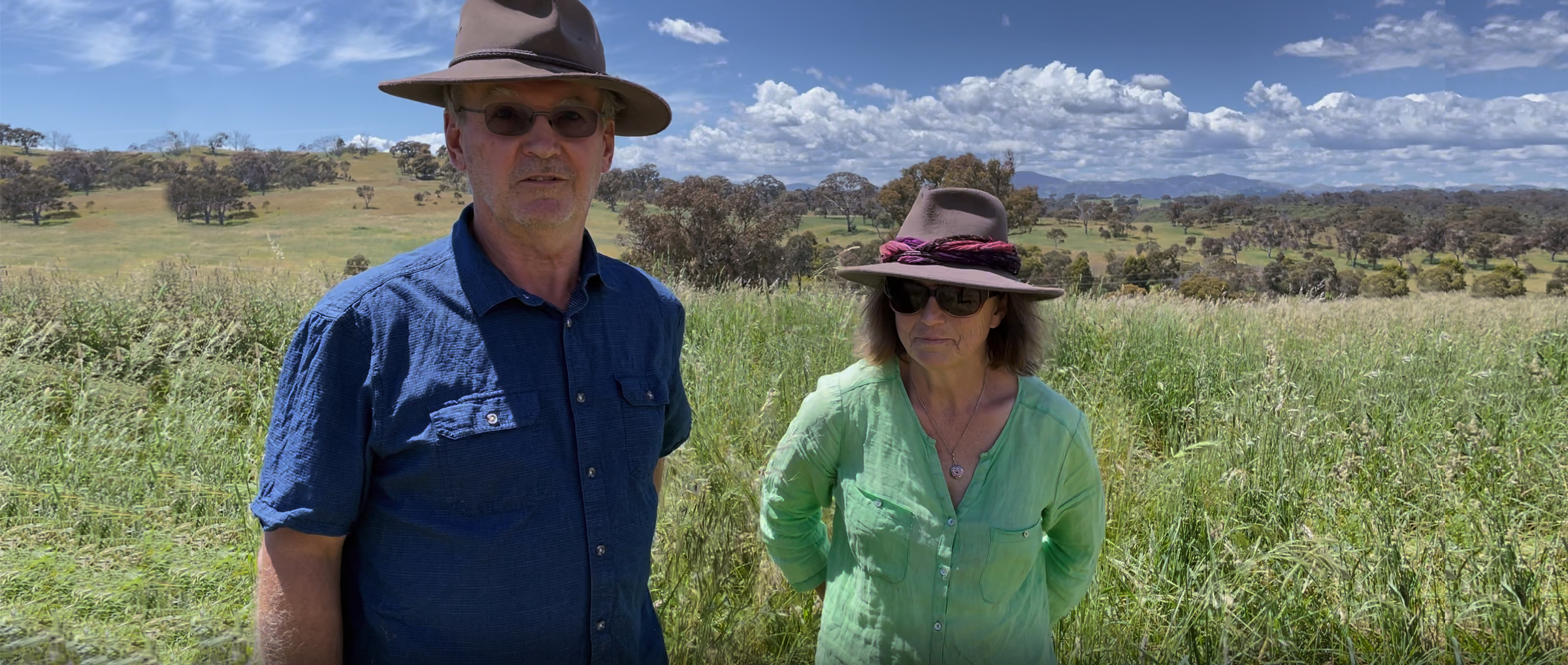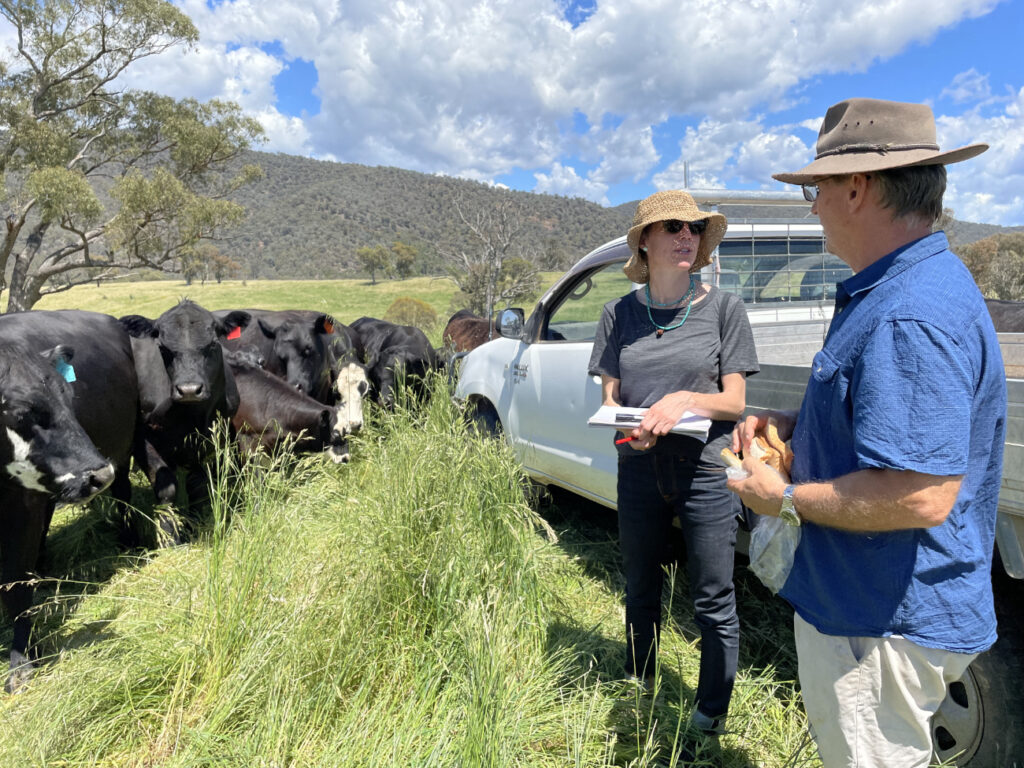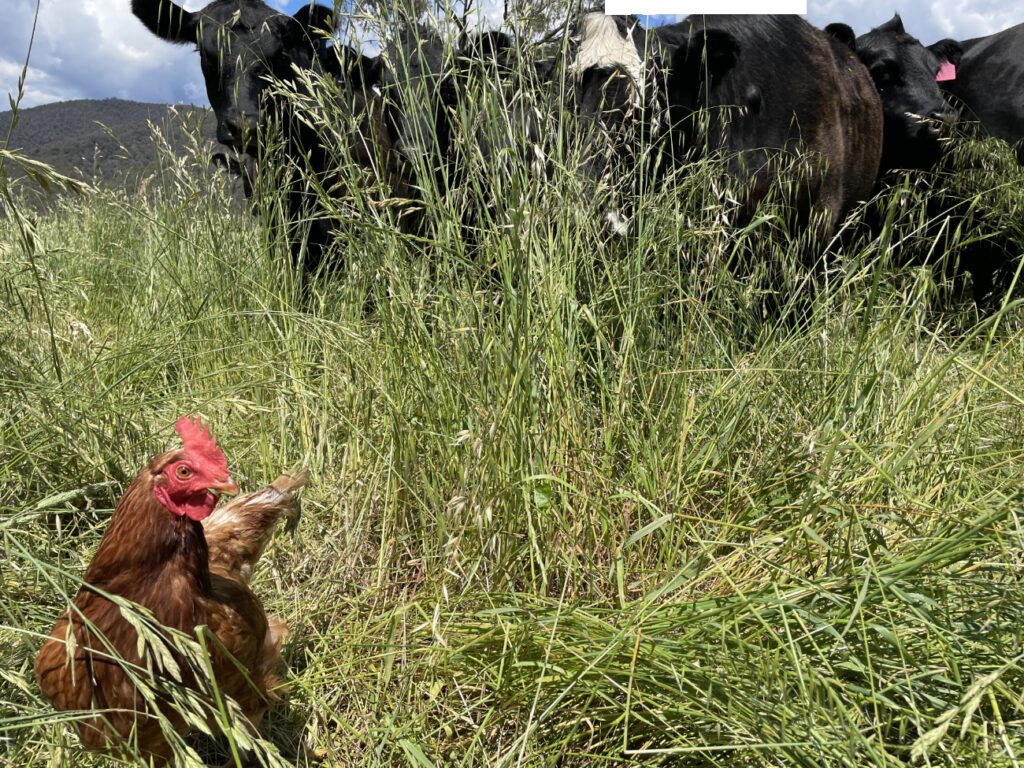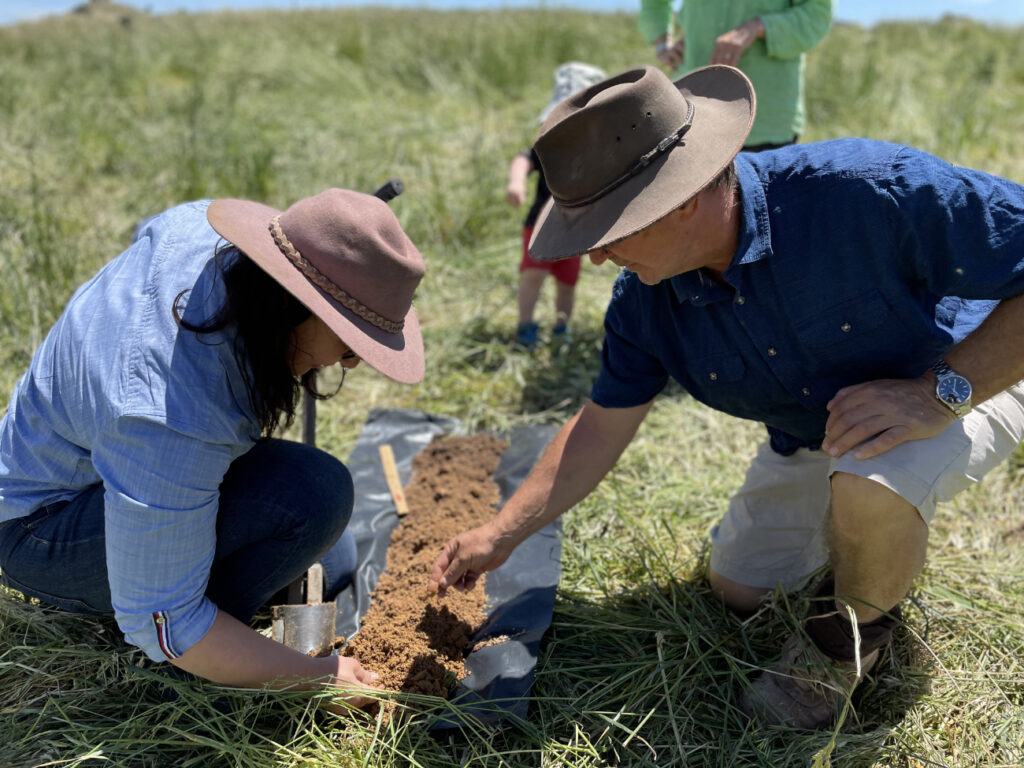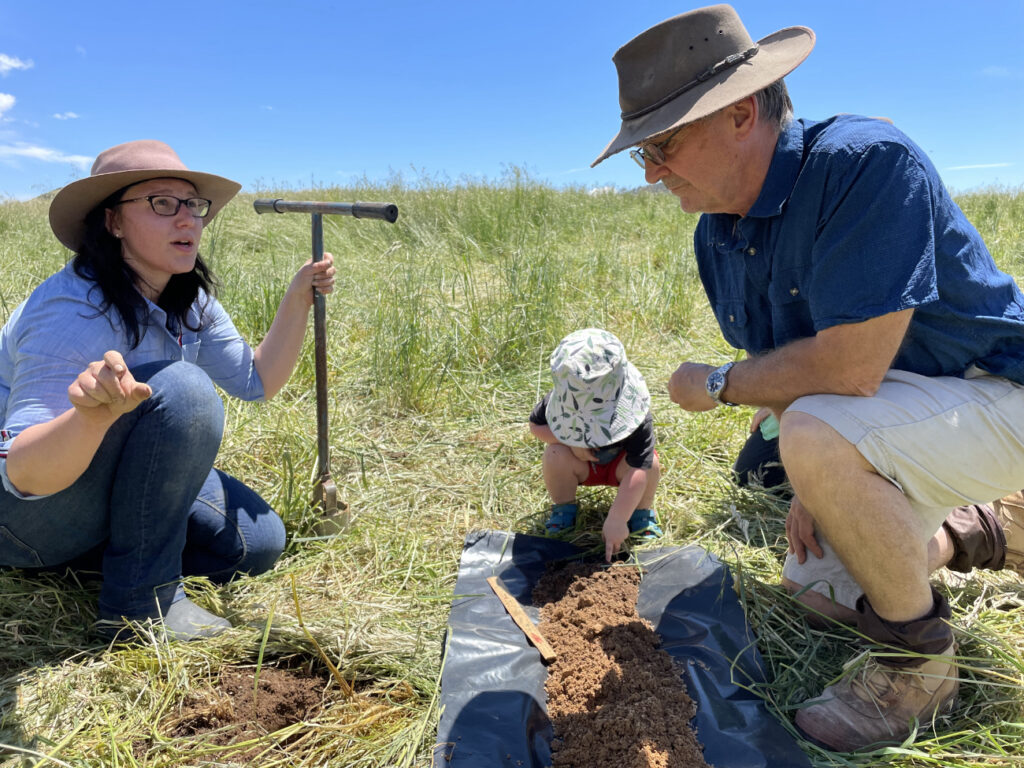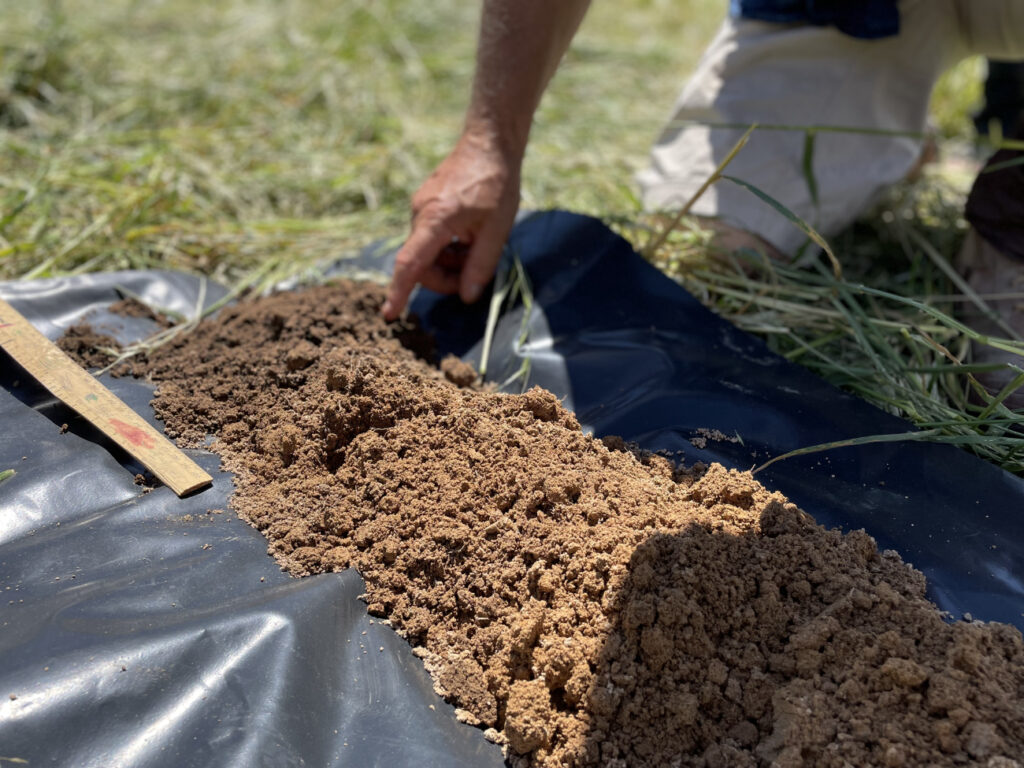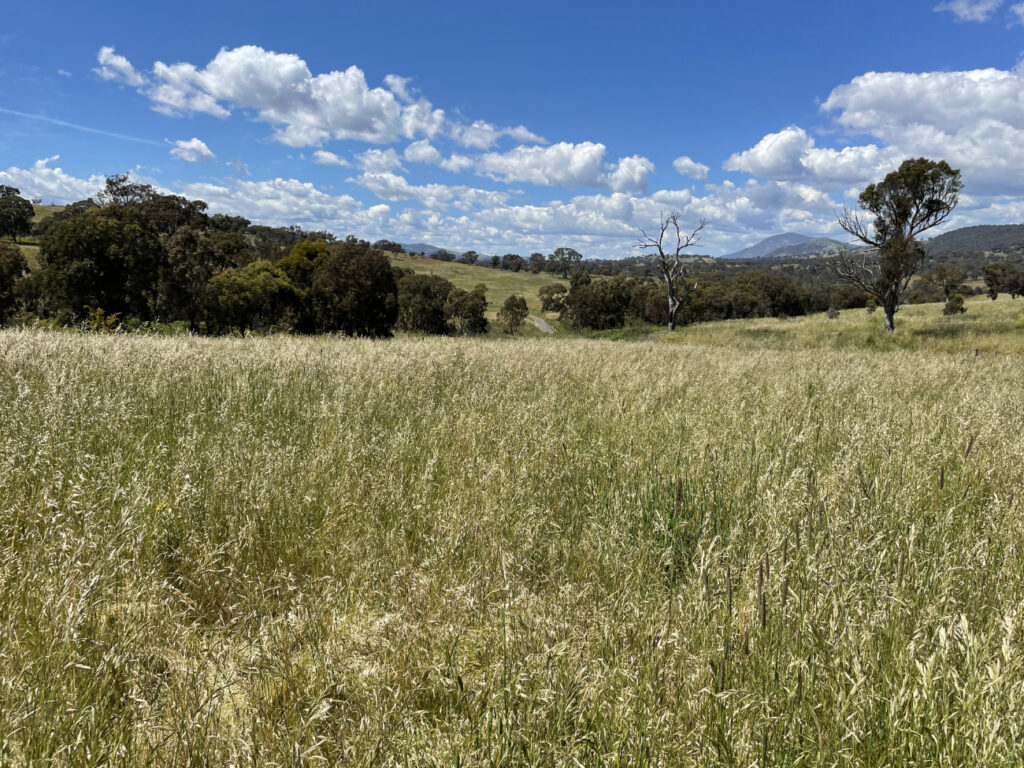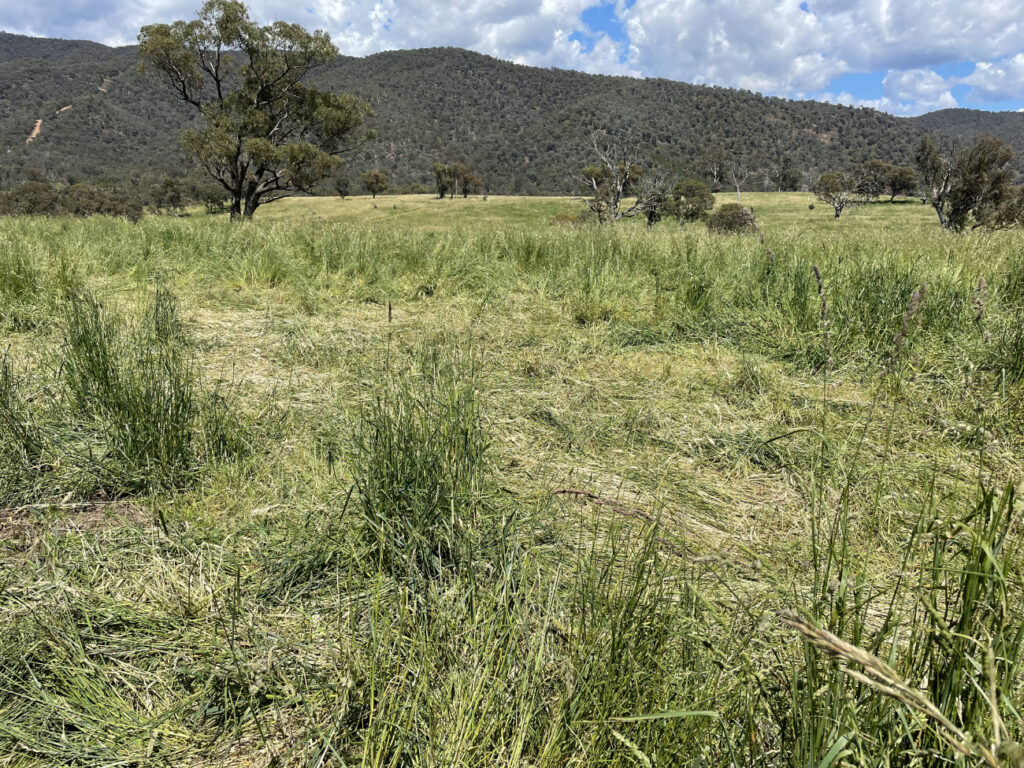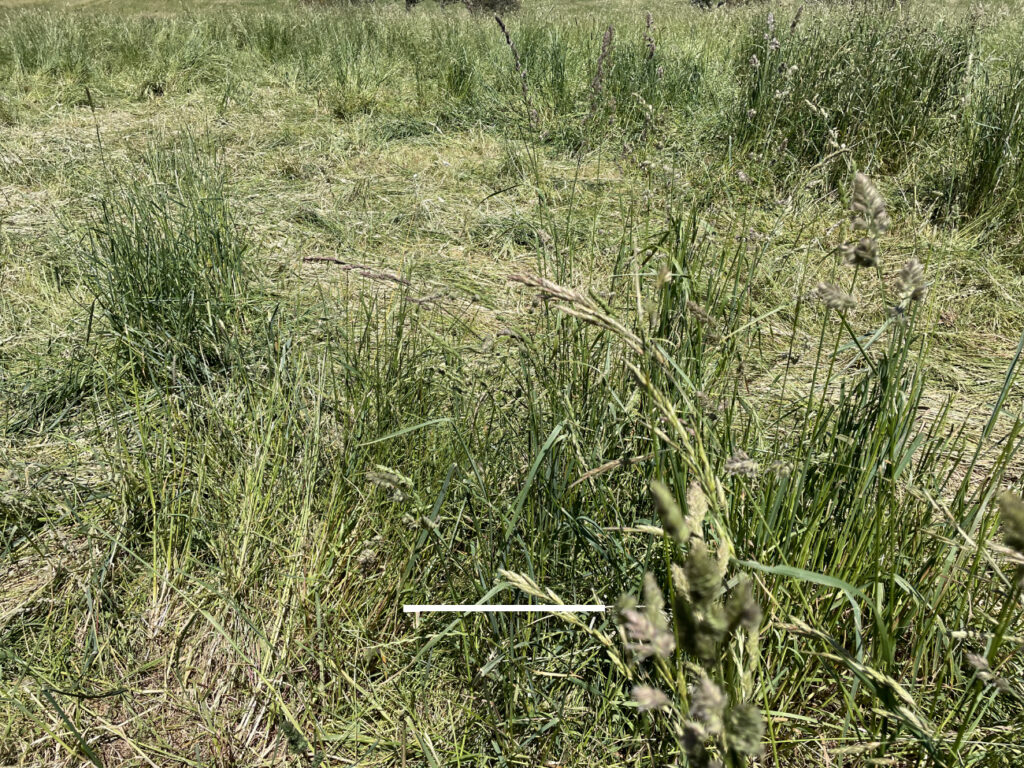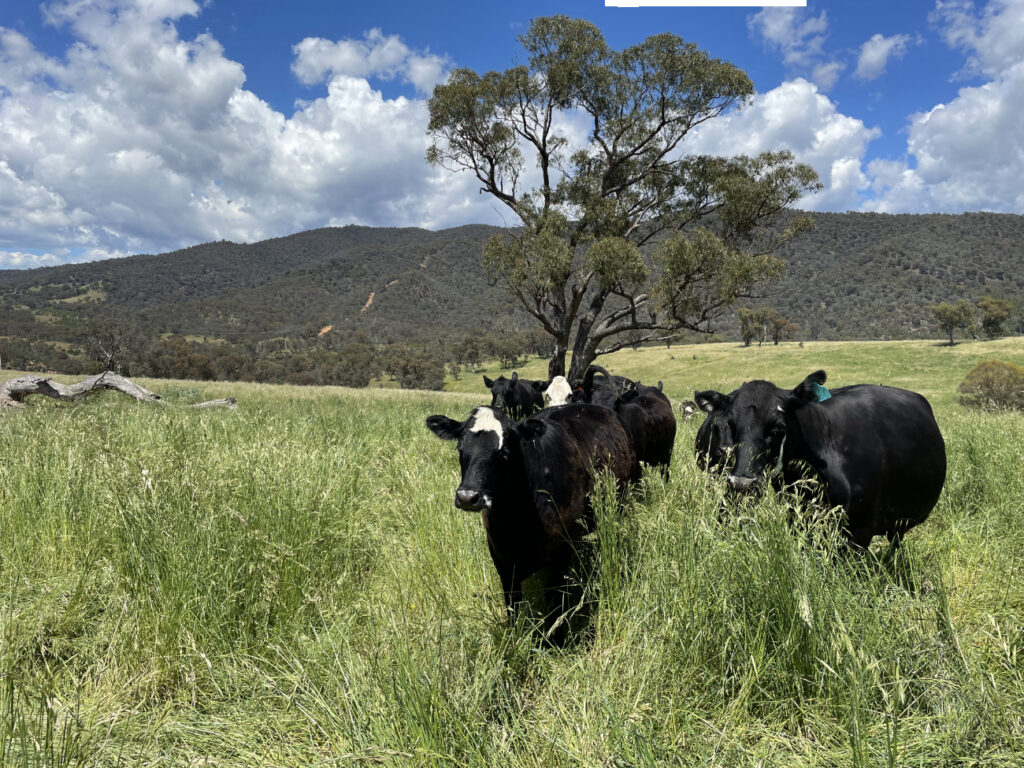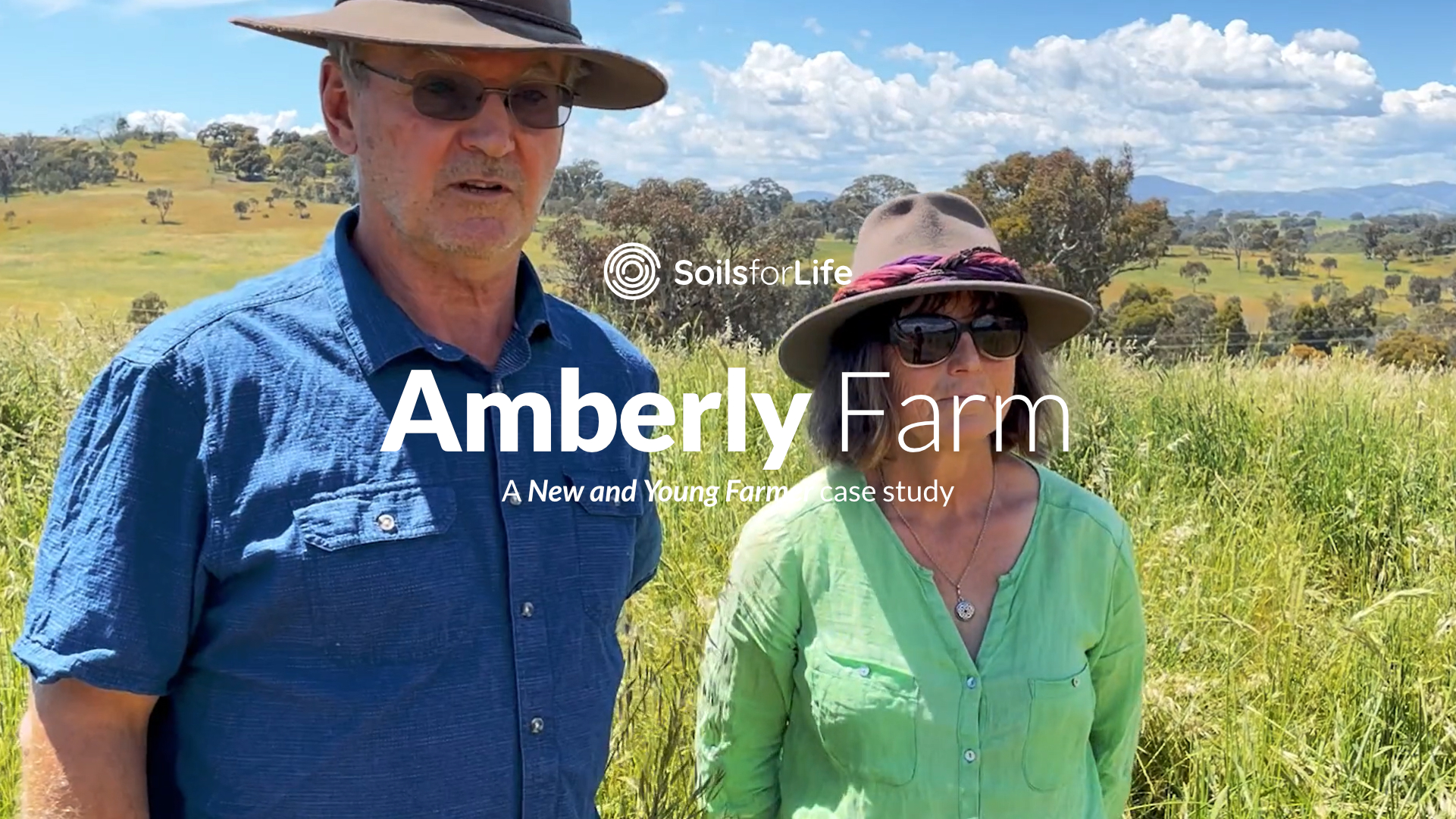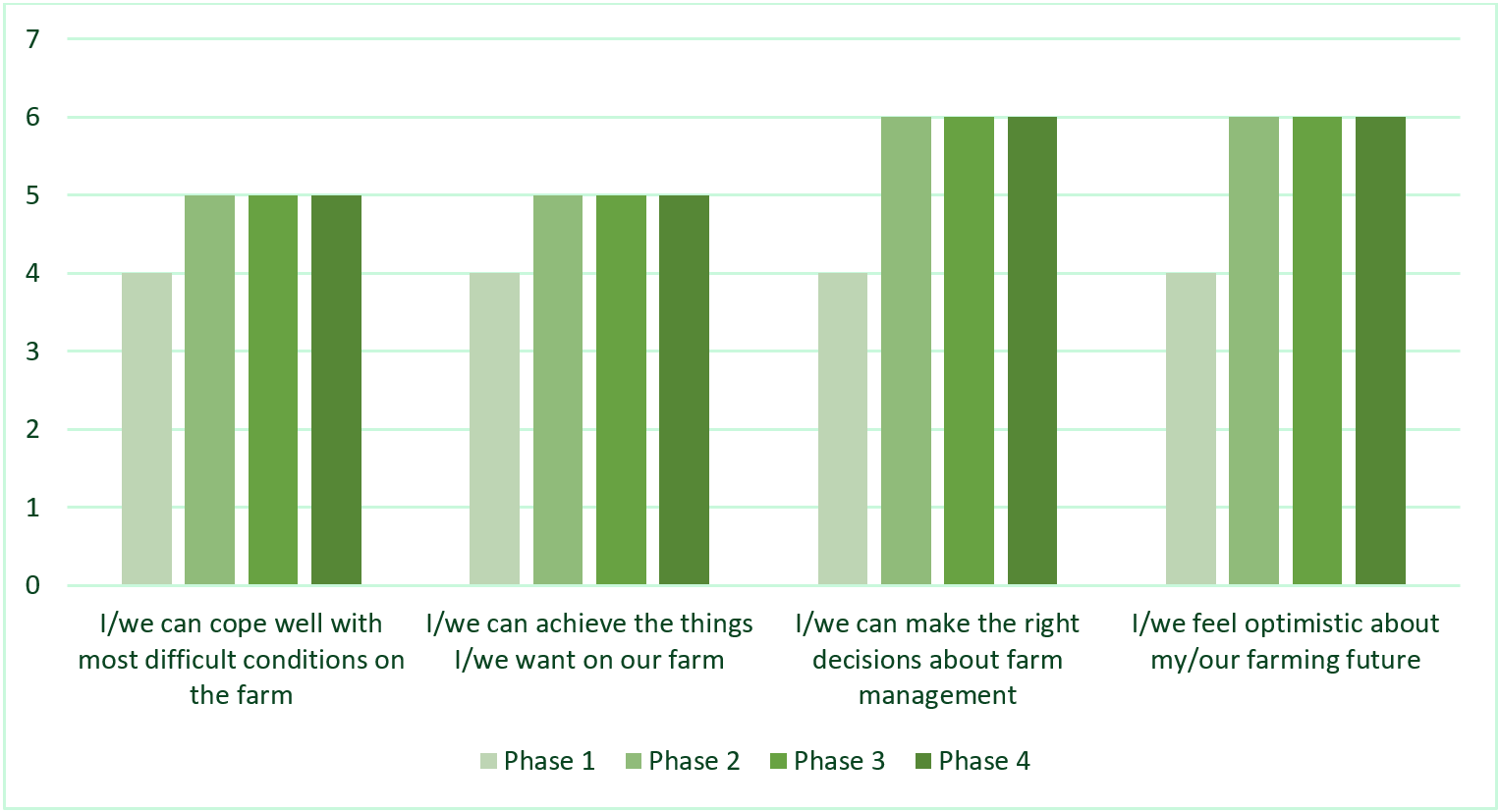"The Lilleymans at Amberly"
A NEW FARMER CASE STUDY
Meet John and Carol Lilleyman, owners of Amberly Farm. The farm is a model for what can be achieved on small acreage. Through their journey, the Lilleymans have brought greater financial security to their farming business by aligning their farming enterprises with the changing climate and investing in the ecology of the natural environment, on which all our farming ventures depend.
The Lilleyman family moved into farming ten years ago when they took over Amberly Farm in the ACT. The previous owner’s beef cattle operation was based on set stocking and rainwater-fed dams for stock drinking water.
Continuing the beef business with very limited farming experience presented a steep learning curve for the Lilleymans, and their story shows how easy it could have been to get swept up in the typical starting journey of farming. However, a benefit of being new to farming is that they could see everything with fresh eyes and question all assumptions. Since that beginning, they have developed three core principles that drive their decision-making:
- Our climate is unreliable, particularly in providing adequate rainfall, so we must adapt and be open to finding new enterprises that fit better and evolve with our changing climate into the future
- Looking after the natural environment is, in fact, highly aligned with looking after our business interests, particularly viewed in the medium to long term
- Connecting with our local community both through land-care projects and produce sales brings multiple benefits – including better business outcomes.
Farm Facts
Location
Annual Rainfall
Agro-climatic region
Property Size
Elevation
Enterprise Type
*Learn more about soil classifications at Soil Science Australia
Location
Ngunnawal Country | Tuggeranong, ACT
Annual rainfall
620mm
Agro-climatic region
Temperate cool wet season
Property size
105ha
Elevation
587m
Social structure
Owner and operators
Enterprise type
Pastured free-range eggs, breeder cattle. market plants
Soils
Kurosols (dominant) and Rudosols (minor occurrences) (DPIE 2021)
*Learn more about soil classifications at Soil Science Australia
Videos
The Highlights
- Recognising that groundcover and soil health are king
- Significant land and dam restoration, including ecological corridors
- Strategic, sequenced grazing of cattle, using single wire fencing and layer hens
- Planting of trees as laneways and ‘stepping stones’ in paddocks
- Whole of Paddock Restoration (WOPR)
- Innovative and efficient native tree planting and watering process for 830 seedlings as part of WOPR project
- Strong and continued relationships with the Australian Capital Territory Natural Resource Management (ACT NRM), Landcare Network, the Southern ACT Catchment Group (SAGT), Urambi Hills Group, and surrounding community
- Continual learning approach and openness to try new things
- Long term planning made possible because of 99-year lease of property from ACT government
- Active succession planning with adult children, in which they all work to support one another
- Reduced need for chemical sprays to treat weeds due to increased groundcover and grasses outcompeting weeds, which is a result of the Lilleymans’ grazing strategy and chickens in pastures
- Based on the available information, there is a general trend of increasing soil carbon and increasing soil pH in the Amberly soils as a result of land management practices
- Soil data from the 2020 sampling regime show a significant difference in several soil properties between the western side of the property (grazed by pastured chickens) and the eastern side of the property
- The Lilleymans’ relationship to farming has improved and they have developed a sense of calm and trust in the process and themselves.
The Amberly story
- Phase 1 - Buying the farm
- Phase 2 - Building relationships
- Phase 3 - Investing in the long-term
- Phase 4 - Now and into the future
Buying the farm
2012-2013
A leap into something new
John and Carol Lilleyman always wanted to try living on the land. As they approached retirement from careers in engineering and welfare, an opportunity arose in 2012 to buy a property close to their home in Canberra. They decided it was time to give their life dream due consideration.
Recognising this decision was a large ‘life crossroad’ and would have implications for the whole family, John and Carol sat down with all three adult children and asked, ‘Do we want to do this?’
After considered conversation, together they decided to leap. John and Carol determined they were not going to ‘die wondering’ whether they should have pursued their dream, and realised, ‘we have to have a go.’ As John cheekily notes, ‘When you say “yes”, it always takes you on a more interesting journey.’
Following common practices
When the Lilleymans began, a lot of the common advice they received was, ‘Spray the weeds and use fertiliser to keep replacing those NPK macro nutrients.’ Being new to farming, the Lilleymans started their first year by following this typical advice.
John observed, ‘In the ACT, when people ask you what you are farming, they mean, “is it sheep or cattle?”’ So, with the help of courses and friends, they learned how to run cattle as per the previous owners.
The grazing courses John participated in took a ‘pretty hard line’ for maximising production. The philosophy was to ‘work out exactly how much grass is in your paddock, size your herd appropriately, get them to eat it all, and move on.’ We were advised to replace the nutrients that were removed by the grazing cattle.
So, John began his farming practice with ‘ordering and spreading superphosphate fertiliser and lime’, following the common message. John felt that the advice was ‘too production driven and didn’t consider the potential longer-term degradation of the land.’
Being new to farming, John and Carol also followed the dominant advice for dealing with weeds. For example, the first summer that the Lilleymans spent on Amberly Farm, ‘literally within months of arriving’, the whole property was ‘yellow with St. John’s Wort, from wall to wall.’
When enquiring about what to do with St. John’s Wort, which typically indicates dry soils and poor humus matter, the most common advice was, you need to boom spray it with herbicide. So, boom spray is what John did, but he did not enjoy it. ‘I sprayed it all, spending weeks on the tractor, it was just horrible. It’s just no life. I thought, this is not what I’ve signed up for. But the St. John’s Wort disappeared.’
John found a neighbour whom he describes as ‘more of a gentle farmer’ and who was willing to step into a mentoring role for the first few years. John was thankful for his guidance, as his neighbour ‘cared about what he did to the land, so it’s probably good that I got him and not somebody else. If I’d have just been left on my own just to work out what to do, I’d have been absolutely lost and probably end up doing terrible things to the landscape.’
Questioning the common advice
Despite the ‘success’ with killing the St. John’s Wort, the common management advice for soil chemical nutrient and cattle management didn’t feel right to John. ‘I didn’t want to continue doing that, but what do I do? People weren’t out there promoting any alternatives.’
The neighbour suggested he read about Allan Savory and his experiences in Rhodesia. As John said, ‘I started thinking about how his approach of changing farm grazing to mimic that of the dense wild herds in Zimbabwe makes some sense.’
At the same time, Carol was reading Bill Mollison’s book Permaculture and attended a course. She began engaging with permaculture ideas and practices and she wanted to ensure that she and John were trying to be holistic.
Carol and John started to realise that people are driven by different things in farming. They began actively searching different viewpoints, which would help them align their practices with their vision and values for their farm.
Building relationships
2014 – 2016
Exploring other philosophies and practices
Carol wanted to ensure that she and John were trying to be as holistic as they could. She wondered, ‘How could we use the animals and nature to do the work for us, rather than relying on the inputs? How can we do things that are more in tune with nature and in tune with what’s going on here on our property rather than trying to adjust things rapidly with chemicals?’
John attended a course on ‘Whole of Farm Planning’ with Alison Elvin of Natural Capital, which prompted him to seriously reflect on the questions of, ‘What are you doing here? Why are you running this farm? Why are you doing it?’ Alison spoke of how, ‘Farmers are wearing themselves into the ground’, and this message resonated with the Lilleymans. It was a lifestyle choice for them, but as Carol reflects, it was ‘turning into an awful lot of worry. And that’s not what we signed up for.’
To further explore these questions, John attended several soils workshops, one in particular with David Hardwick. This stimulated him to think more about the complexity and importance of soil health.

Experimenting with practices
In 2014, John responded to a call to farmers from ACT Natural Resource Management (ACT NRM) in the ACT Government for submissions under the Rural Grants program to build farm infrastructure that helps to make enterprises more sustainable. John’s successful proposal for funding ‘allowed us to try the cell grazing idea because that just seems to be the better practice and makes sense to me.’
Transitioning to cell grazing was a ‘big job’. When the Lilleymans bought the property, there was little internal infrastructure, just dam water and a handful of large paddocks. To transition their property, the Lilleymans installed internal fencing, water infrastructure and troughs.
The grant supported the transition[1] of their internal fencing to electric, creating many more paddocks (Figure 2) with options for additional temporary electric fencing down to two-hectare cells. This allowed the Lilleymans to implement strategic grazing using only a single hotwire at 82 cm and one strand of site wire to ensure the fences were visible to both stock and humans. John said, ‘I got some raised eyebrows about the wisdom of a single wire fence but it was an idea that I got from a Canadian farmer that has proven itself over time – the cattle are very respectful of that single hot wire, and if a small calf crosses underneath, it doesn’t matter. It will return to its mother soon enough’.
More paddocks meant more stock water points were needed, and an engineering challenge was presented in order to build permanent water sources accessible across the property. The Lilleymans laid a network of pipes under the proposed internal fencing and established a gravity-fed system to ensure the availability of high-pressure water across the farm. The Lilleymans were also able to acquire a dependable source of off-farm stock water to provide year-round water security. The transition took the Lilleymans over two years, and John still jokes that the incredibly hard work of digging water pipe trenches in tough rocky soil will stick with him for a while.
[1] https://www.youtube.com/watch?v=YNmMxm-XDmM
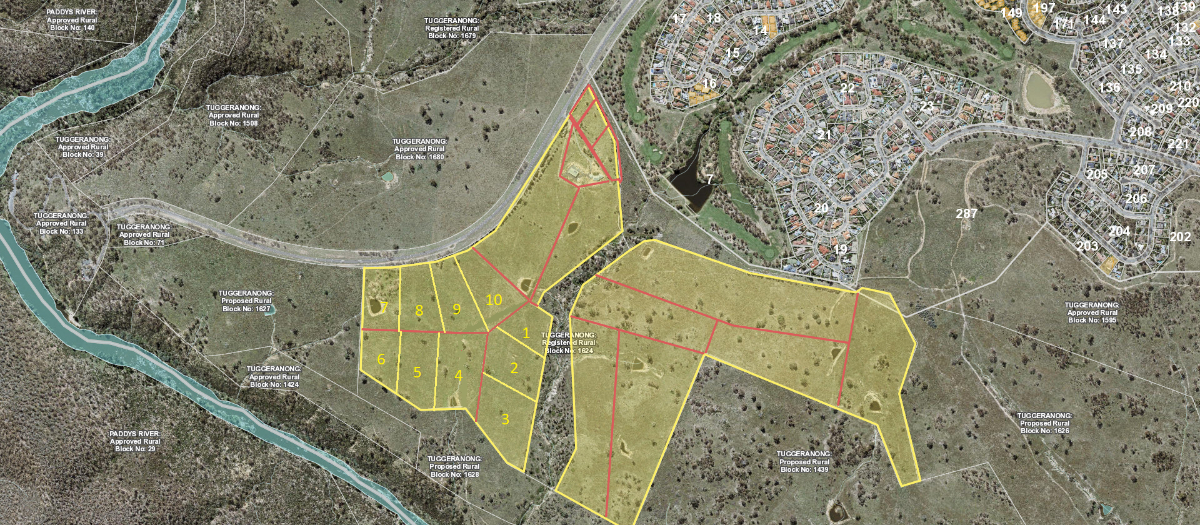
Figure 2. The new permanent internal electric fencing (in red), installed with numerous trough points, was co-funded with two ACT NRM Rural Grants between 2014 and 2016. Temporary grazing cells (for example, the 10 cells labelled) were then easily created, one at a time, just ahead of the cattle using temporary electric fencing (in yellow).
With the installation of this infrastructure, the Lilleymans began experimenting with concentrating their cattle (as per Allan Savory’s recommendations) in smaller paddocks for shorter periods to maximise rest and regeneration of soils and grasses. Rapid recovery of earlier grazed cells can be clearly seen as the cattle move on to graze the later cells (see Figure 3).
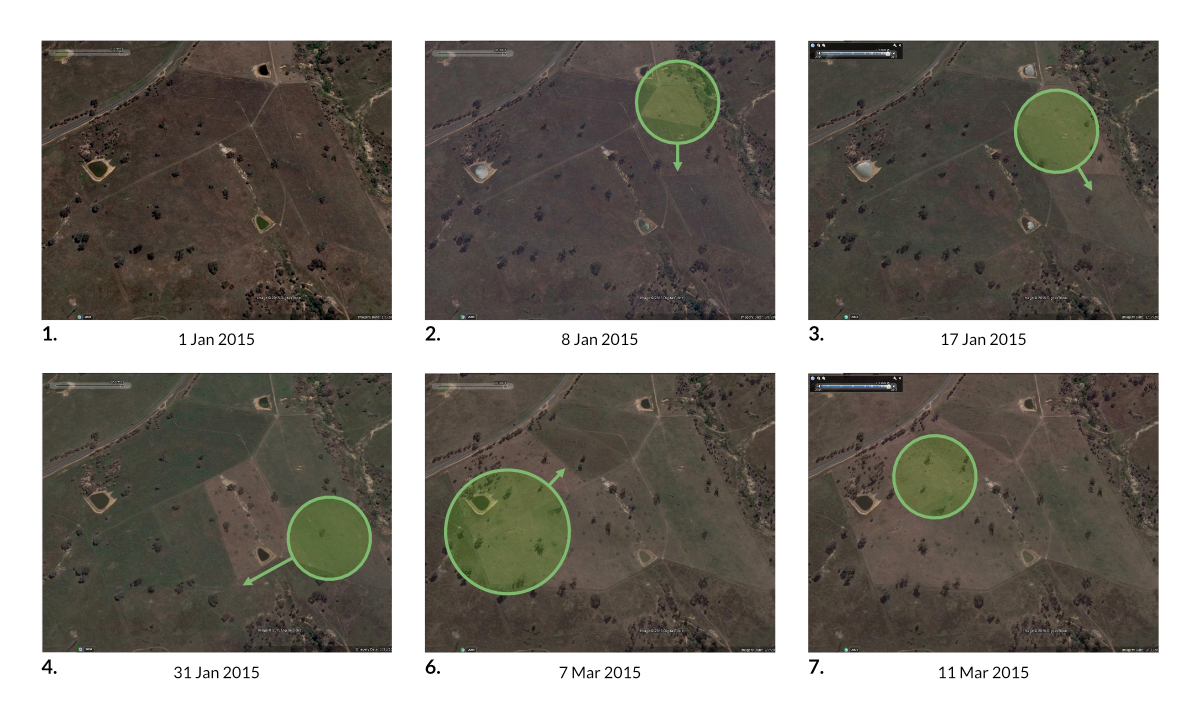
Figure 3. Cattle moving through grazing cells each week. The first image (no. 1) shows the grazing area before any grazing took place. The yellow circles highlight the paddocks where cattle just finished grazing. The arrows show where cattle were next moved to. Rapid recovery of earlier grazed cells can be clearly seen as the cattle move on to graze the later cells. (Source: adapted from Google Earth, 2015).
Multiple and diverse partnerships
Through grants and other support from the ACT NRM, in the ACT Environmental, Planning and Sustainable Development Directorate (EPSDD), ACT Emergency Services Agency, Greening Australia, and the Southern Area Catchment Group (SACG), the Lilleymans were able to improve their drought resilience (e.g. establishing grain silos), firefighting capability (e.g. improving property access and water supply), reduce the prevalence of African lovegrass (Eragrostis curvula), engage in Whole of Paddock Rehabilitation (WOPR), create environmental corridors and paddock tree enclosures, and work on dam restorations at Amberly Farm.
Grants as a commitment to act
John’s background involved a fair bit of grant proposal writing, so the Lilleymans felt comfortable with the process. They also view grants as a commitment to act. That is, in addition to the opportunity these grants offer in terms of creating relationships with government, other expertise, local community groups, and younger generations, John also really appreciates that grants provide an extra incentive (almost a motivation through obligation), to push him to experiment and do things differently on the farm: ‘And then once you sign up for something, then you’ve actually got to get your act together and do it.’
Investing in the long-term
2017 - 2021
Multi-generational lease
One important aspect with helping the Lilleymans focus on long-term investment for soil and land regeneration is their property’s 99-year lease with the ACT government. Not all ACT rural landholders have 99-year leases on their properties with a number having much shorter leases from months to ten or 20 years in duration.
“On a ten-year lease, we would have struggled to find the same level of commitment and make the necessary financial investment to undertake the same regenerative agricultural activities we have at Amberly as the benefits may not be seen for a long time – these things are measured in decades, not in a couple of years.”
The multi-generational lease enabled the Lilleymans to undertake processes requiring a longer view, including succession planning and projects such as fencing the dams, growing tree corridors and WOPR.
Succession planning and diversification
Their long lease also allows the Lilleymans to focus on succession planning and business diversification with their children. From early on, they have understood that by diversifying income streams, there is less pressure to have more extractive farming practices.
Since they bought their property, the three Lilleyman children have experimented with diverse enterprises such as free-range hens, micro-brewing, garlic, microgreens, succulents and a music studio. Most significantly, in 2017, John and his son Adam eventually ‘settled on pasture-raised hens because of what they do in terms of regeneration.’ (Learn more about Adam’s pasture-raised hens in the thematic case study Young Farmers Raising Pasture-Fed Chickens.
Meanwhile, John and Carol’s other son Guy continues to run the Amberly music studio onsite (once graced by Midnight Oil’s Peter Garrett) and their daughter sells succulents at the farm gate, along with the eggs. Essentially, the family business brings the family together, and they all work to support one another.
Key to the Lilleymans’ successful succession planning was the inclusion of their children in the decision to buy the property, and in the running of the property. One of the great benefits of having made the decision together as a family, is that the children have really taken ownership of the idea. John and Carol are providing enough support and enough space to enable the children to live out their dreams as well.
The Lilleymans feel positive about the role of succession planning for their own property, as well as its contribution for the future of ACT farming more generally. As Carol reflects, ‘When you look at the average age of farmers in the ACT, I think it’s somewhere up close to 65 or 70. There are few younger ones, but the majority are all in the retirement phase…and this is something that has to change.’ According to Jeni at ACT NRM, this succession planning and experimentation is part of what makes the Lilleymans approach to farming more resilient:
“Whilst they are new farmers, they realise they are not going to be there long-term, and so early on, they let the children have a big say in the decision-making and have their own enterprises. John and Carol step back and let the children experiment.”
Fencing the dams
Once the Lilleymans installed the reticulated water systems, the livestock no longer needed access to dams for drinking water. So, in 2017, they turned their attention to fixing the inevitable erosion that occurs where water runs off the paddocks into the dams and is further trampled by stock. Working together with SACTG, the project included fencing out four of the nine Amberly dams from stock access and conducting a hands-on erosion mitigation workshop led by a local expert (Cam Wilson from Earth Integral). Local farmers and rangers attended the workshops. Large plantings around the dams were expected to create wildlife-friendly habitat both above and below the water line, as well as remediate the erosion.
Growing tree corridors and ‘stepping stones’
Back in 2015 (Phase 2), with support from Greening Australia, the Lilleymans planted trees along the laneways between paddocks (see Figure 4 connective corridors between K2 Road and K1 Road). These tree laneways serve several purposes: they help ease and direct the movement of cattle; provide sun and wind shelterbelt along edges of the paddocks; and create a connectivity corridor for other flora and fauna. The tree laneways also lead down to a creek crossing, enabling the movement of stock across the creek. In the five years since the trees have been planted, the Lilleymans are excited to see their growth, as they begin to look more like ‘actual trees’.
Because parts of the land had been so heavily cleared, the cattle did not have sufficient shade in all areas of the rotational grazing cells. This made planning for rotations in peak summer challenging. The lack of trees ‘buggers up the cell grazing because now I can’t put them in the cell I want them to, because there’s no shade and it’s the middle of the summer.’ John also learnt that, ‘Small birds, so important to the health of paddock trees, are reluctant to fly more than short distances between trees due to predator risk.’
The answer to both problems was planting six paddock tree enclosures, ‘stepping stones’, in 2019 (Figure 4), in collaboration with ACT NRM and Greening Australia. The enclosures are roughly 30 meters by fifteen meters, with fifteen trees and shrubs in them. Nearly three years on, the trees are now big enough to be seen on satellite images. These tree enclosures are not only beginning to offer increased shading, but also soil stability, soil health, improved habitat for diverse communities above and below ground, as well as offering ‘stepping stones’ for birds into and across the property.
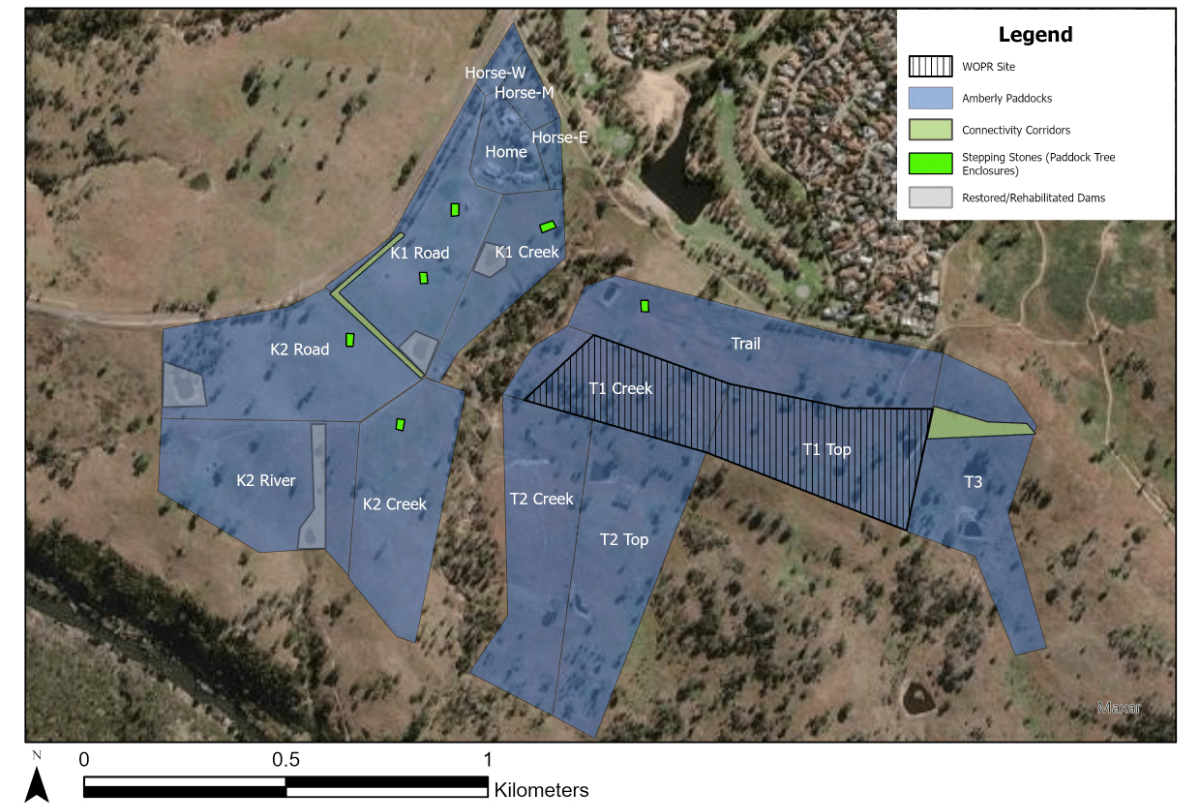
Figure 4. Paddocks and tree plantings from 2015 to 2020 (Source: Soils for Life).
Environmental and social corridor
Recognising the interconnectedness between their property and the surrounding land, the Lilleymans worked with SACTG to obtain a 2020 ACT Environmental Grant from the ACT Environmental, Planning and Sustainable Development Directorate (EPSDD) and the Urambi Hills Group to develop and plant a connectivity corridor between their land and Urambi Hills (next to T3 paddock, see Figure 4). Urambi Hills is a nature reserve east of the property.
Meanwhile, social connections with the community also continue to grow. The Lilleymans initially connected with the Urambi Hills Group through a relationship with SACTG. Since the 2020 plantings, the Urambi Hills Group continues to visit the farm for weeding of the new corridor and the tree laneways.
Whole of Paddock Restoration (WOPR)
About the same time as planting the stepping stones, the Lilleymans worked with ACT NRM to trial a Whole of Paddock Restoration (WOPR) in collaboration with Greening Australia (see Figure 4 for the location of the WOPR site). The Amberly property contains some very important remnants of box gum woodlands, so their goal was to restore some of the less productive and degraded paddocks into this endangered ecosystem, as well as address the devastating red gum die-back happening across the region.
As part of his contribution, John had to create the holes for planting 830 native tree tube stocks. He decided that instead of drilling individual holes with the tractor auger, he would rip lines along the contours of the paddock, between three and four meters apart. The rip lines acted as mini swales, slowing and capturing any water coming down the contours; a principle inherent to Keyline farming. In May 2019, about 50 grammar school students planted the 830 tube stock of native seedlings.
Unfortunately, as often happens, the timing of budgets and the timing of nature were not in perfect sync, and the tube stock had to be planted in the middle of a drought. Importantly, John’s contouring approach also enabled far easier watering of the native seedlings after they were planted. Using the laneways between rip lines, the Lilleymans drove along in a vehicle kitted out with an IBC cube (Intermediate Bulk Container) and two hoses out the back. With three people – one driver and two walking along to guide the water with about ten seconds on each seedling – and five hours of work, they were able to keep all 830 seedlings watered during the drought, using roughly 6,500 litres of water for each watering.
Greening Australia revisited the WOPR revegetation site in 2020 and looked at 30 plants out of the 830 to assess survival rate, finding that 28 plants (93% in this sample selection) were still alive. Needless to say, Greening Australia and the Lilleymans were pleased with these results, and this approach offers a great example for others considering a WOPR.
Widening their approach to managing weeds
In addition to St. John’s Wort, African lovegrass was also a major issue on their property. The Lilleymans used their flexible fencing and grazing management[1] throughout the pasture to help address its prevalence. With an ACT Environment grant administered and the support of SACTG, the Lilleymans began undertaking spot spraying after the cattle grazed down a cell. When the cattle were moved, John could ‘actually see what was growing in the cell,’ and could apply very selective spot spraying.
John continued this approach for about five years, with the help of a colleague. This approach was initially time intensive, but the Lilleymans are now seeing other species outcompeting African lovegrass, courtesy of the fantastic post-drought growing seasons and the previous knock back of the African lovegrass. ‘We used to put hours and hours into spot spraying. And it’s gradually paid off to the point where that’s now a much-reduced requirement,’ both in terms of time and chemicals. And now John is ‘letting the desirable paddock grasses grow quite tall, which helps a lot.’ They still spray laneways and the edges of things when the first thing that comes up is African lovegrass, but he also doesn’t worry so much now.
John and Carol have come to have more faith in the idea of plant succession. As Carol says, ‘We have learnt that certain weeds come up in certain areas because the soil is lacking a certain thing. Recognising that, we now have a bit more of a relaxed, longer-term view.’ John agrees, saying:
“If you look after the soil, then although the weeds come up first on bare ground, they then get replaced by a better class of weed. And then gradually the dominant paddock grasses replace them, as long as you do the right thing with the soil. Because we keep building the soil health and maintain very high levels of ground cover, the right things will grow, up to a point.”
Now and into the future
2022
Exploring further and trusting themselves
In addition to two more dam restorations later this year, the Lilleymans are also exploring other things to try, such as pasture cropping, land stewardship payments and carbon farming. They will also continue building on the approaches that have served them well, such as being open to anything, adjusting holistic practices to their own context, and trusting in themselves.
As John says:
“I’m always experimenting, trying different things, making mistakes and learning from them. I only realised in retrospect that my first view of soil as principally a container for key chemical nutrients, which was gradually replaced with the realisation that what was missing was its complex biology, was part of my personal Regen Ag journey. I embrace it because it is non-prescriptive in how you achieve Regen Ag’s desired outcomes – it provides tools and ideas but it’s up to you how you get there.”
For their hard efforts resulting in positive ecological, economic, personal and social changes on their property, the Lilleymans received an Australian Government ‘Innovation in Agriculture’ Award in the 2019 ACT Landcare Awards.
Continuing with soil monitoring
Another benefit of the grant projects over the years has been the associated soil monitoring opportunities. The Lilleymans have participated in a minimum of eight soil sampling and monitoring events from 2013 to 2021, often with ACT NRM, and funded by the Australian Government. These events involved soil sampling at a range of soil depths from 5 cm to 30 cm using manual or petrol-powered corers and the measuring of 28 soil properties. Accepting the opportunity to collaborate on externally-funded soil sampling and testing programs has led to insights into the aspects of soil monitoring the Lilleymans need to prioritise, and John is keen to develop a more strategic monitoring plan in the future. See below for a summary of key insights from the technical report, Amberly Soils Report (2022).
Cropping out perennial weeds
The big, burning question for the Lilleymans right now is whether there are other ways to deal with perennial weeds. They are curious to try pasture cropping as a way of out-competing and suffocating African lovegrass and other invasive perennial weeds, but they have experienced ‘great difficulty finding anybody’ to give them advice. As John said:
“I knew that pasture cropping has proved effective in dealing with annual weeds and I had developed a grant application to trial its effectiveness against perennial weeds, but it had too many unknowns for me to feel comfortable submitting it. How would it work? Is it predestined to failure? Would I have to glyphosate the paddock first in order to get this thing to get started? Or would I try and plant it in amongst the ALG [African lovegrass]? Is kangaroo grass the most robust against invasive species or do I need to use a tough introduced grass? How many seasons of resowing would it take? I really needed someone with a lot of regen cover / pasture crop experience to go, ‘It’s worth a go. Let’s try it on a field of perennial weeds, and make these changes to the usual approach…'”
Accessing stewardship and carbon credits
The Lilleymans were very excited to hear about carbon credits and land stewardship schemes, to be rewarded financially for the hard regenerative work they are doing. But they have found that it is really hard to join these schemes. Firstly, their size means: ‘we’re still under the minimum acreage that makes it work financially’. Secondly, the carbon credits, from their understanding, are not retrospective, meaning ‘early adopters who did regen work under their own steam before there was an incentive aren’t eligible for the payments – not even for those future, yet-to-be-realised benefits resulting from those early practice changes. So, it’s the late adopters who will get the majority of the government payments.’
They have been disappointed with the current accessibility and high entry costs of these schemes which effectively excludes small farms; they have not been the only regen farmers to experience this disappointment. Movements are underway to address these issues at the policy level, which hopefully leads to equitable financial distribution to regenerative farmers in the future.
Looking for peer-to-peer support
The Lilleymans are looking for other groups of regenerative farmers to help build a community of learning and support. Last year, ACT NRM organized visits for the Canberra area farmers to Boorowa’s regen land steward’s group (the Boorowa Community Landcare Group – NSW Landcare Gateway), so the Canberrans could experience how this group gets together regularly to share ideas and help each other. From this, ACT NRM is supporting a grazing group (community of practice) to bring ACT graziers together, to support one another through different seasonal and market conditions and share knowledge about how they farm and their regenerative pathways. Regenerative farmer Paul Hewitt from Grabben Gullen in NSW is supporting ACT Regional Agricultural Landcare Facilitator, Jeni Cumberland to host the quarterly meetings and build the group’s capacity, which John and Carol are excited about.
Similar to the other participants, John and Carol value the ‘the idea of farmers getting together by ourselves.’ Their hope is that together, they could navigate stewardship programs for biodiversity and carbon offsets, particularly on their smaller land area. Right now, the Lilleymans are exploring carbon payments with Carbon8 and measurements with Accounting for Nature, but want to learn what others in their position are doing. They also hope the group could become a source for sharing equipment, for example, with projects such as their experimentation in pasture cropping.
Carol is also excited about a newly formed ‘Women in Ag’ group run by the Southern ACT Catchment Group. This group is for the ‘women, the wives, the girlfriends, the female part of the agriculture system, because we often are the sounding boards and supporting somebody having a crisis.’ The group is a great support, and is just getting started, so watch this space.
Over the coming years, John and Carol expect to see more ACT farms diversifying away from the traditional sheep and cattle grazing as the demand for locally grown, ethically produced food of all types increases – as evidenced by the ‘Food in The Capital’ and other ‘Paddock to Plate’ initiatives that are gaining momentum in the ACT.
Openness to anything
The Lilleymans’ approach to farming is characterized by a remarkable openness. As Carol said, ‘We basically never said no to anything reasonable, really. If somebody said, “Come along” or “Would you like to?” We’d go, “Okay.” …Any opportunities that have come along, we’ve embraced them. And that’s why we’ve done so much in such a short time.’
John and Carol’s openness to anything is a characteristic that ACT NRM also values. According to Anna at ACT NRM, the Lilleymans have, ‘a thirst for knowledge and are open to all conversations. They are very receptive to new ideas, they don’t come with any preconceived ideas, so they welcome any information, and jump at any workshops.’
Be willing to adjust the regenerative agriculture principles
John and Carol now focus on what works for them in their specific context. For example, common practices in cell grazing teachings are to graze the cells when the grass gets to a certain height. However, John has observed that letting the grass grow quite long in some areas actually allows for more over-crowding of the weeds, which wouldn’t occur with a more aggressive grazing strategy. Further, he notes, ‘It’s impossible to graze all the paddocks down before the weeds have developed viable seeds and so you then risk distributing the seeds further via the cattle – something I have clearly observed in the cow dung’. By observing the patterns and characteristics of his own property closely, John has adjusted the regenerative agricultural principles to best meet his desired goals of weed minimization.
“Everyone now is saying groundcover, keep the property covered in grass. And I hadn’t actually felt too concerned until probably the last three, four years in the drought when I started seeing the groundcover going. And I know what happens. It just fills up with weeds. As soon as it rains again, all the bad stuff comes in first. And I just don’t want to do all of that again. So, I’m thinking I just want ground cover all the time even to the slight detriment of under grazing. The right amount of grazing is sort of the perfect symbiotic relationship between grazing animals and grass. I’ve decided to err on the under-stocked side of that. And I think every paddock, every few years should be just let to go to seed anyway. We shouldn’t graze it all, every year. Let some regeneration happen. So, I’m now erring on that side and I’ve seen the benefit of actually doing what I said I should be doing which is keeping just as much as you can on perfect groundcover to the point where I’m not unhappy about what other graziers would call shading out your next season’s growth, you need to get that grazed down. I’m going, “No, it’s actually shading out the weeds and the ALG [African lovegrass].” It is actually looking so much better at the moment than it ever has.”
John realized how the context of farming is unique to each place, and that he had to find the patterns and responses on the land they are stewarding which best works for them and their land. Anna at ACT NRM also recognizes and applauds John and Carol’s approach to learning what works for them: ‘They arm themselves with as many tools in the toolbox that work for them, and they tinker and tweak them if the tools don’t work for them. I really reflect on this and admire them for it.’
Working Towards Holistic Outcomes
Find out more about the practical and scientific information around the outcomes to which the Lilleyman family at Amberly Farm are working towards.
In this section, we present the changes that the Lilleymans have observed over time, as well as changes measured in this case study process, in relation to ecological, financial and social outcomes of their farming philosophy and practices.
ECOLOGICAL
Ecological changes
Solar/energy cycle:
The Lilleymans have observed significant changes in the solar/energy cycle on their property. In the beginning, their property used to suffer ‘runoff across paddocks, and we don’t anymore. We have very tight ground coverage, particularly where the chickens have been.’ The reseeding is ‘so vigorous because of the amount of nutrients, that the groundcover is nearly a hundred percent in a lot of places.’
Water cycle:
Visually, there has been a reduction of erosion. Initially, the areas around the dams were totally bare, with signs of erosion. Carol reflected on how, with all the rain that they recently had, ‘the erosion would’ve just got worse,’ but now, ‘we’ve got these dams with grass to the edges, and we don’t have that erosion.’
Community (ecosystem) dynamics:
The grazing strategy has greatly assisted in managing the weed burden, including African lovegrass, St John’s Wort and Patterson’s Curse on the property, therefore minimising herbicide usage and increasing soil organic matter and soil life without the need for fertilisers.
Below ground, there has been an improvement in biological life. When the Lilleymans first arrived on the farm, for years, they never saw earthworms. Their son, Adam said, ‘They just simply weren’t there. [Whereas now,] you’ll find an earthworm or multiple in every single shovel you take out.’
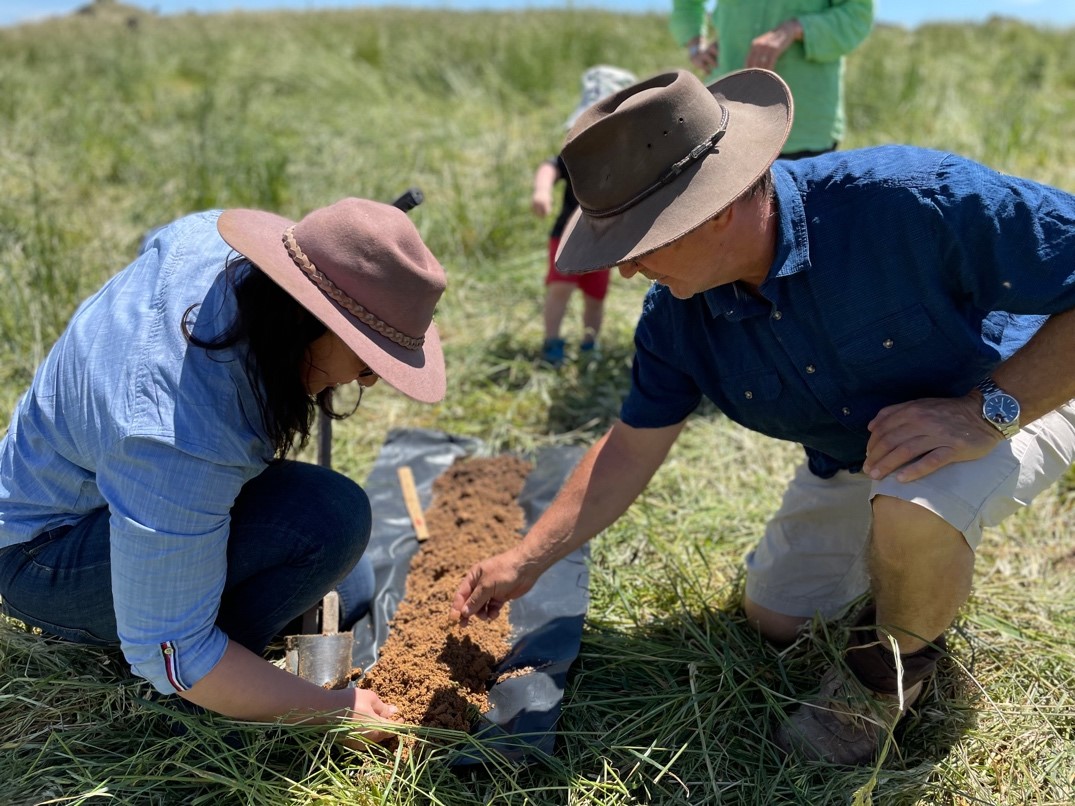
Image 1. Soils for Life soil scientist Daniela Carnovale and Amberly owner John Lilleyman observing the soil profile.
Soil / mineral cycle:
John and Carol Lilleyman have had several soil tests on their property over nine years (2013 – 2021). Below we share key soil findings on Amberly, (See the Soil Report for more details).
The available data for 0-10 cm soil depths across the property appear to show an increasing trend over time for soil pH, sulphur, total carbon, and cation exchange capacity (CEC). These trends may indicate improved soil function, but future strategic soil sampling and monitoring will assist in confirming these trends.
Soil data from 2020 show a significant difference in several soil properties between the western and eastern side of the property. In the western paddocks (See Figure 5), the manure from the rotating chicken caravans has likely contributed to the increased levels of total nitrogen and phosphorus in the top 5 cm of soil (superphosphate applications ceased in 2017). In relation to sulphur, which has historically been a limiting nutrient for pasture growth at Amberly, the results from soil sampling in 2020 and 2021 are an early indication that sulphur levels are increasing on the western side of the property, also likely due to the chicken manure inputs in these paddocks.
The soils in the eastern paddocks have lower pH, total nitrogen and phosphorus. This may be a reflection of the differences in soil type (e.g. the occurrence of sandy, stony soils) and management practices (e.g. revegetation). The lower phosphorus levels will suit the native vegetation that is not well-adapted to high levels of phosphorus in the soil.

Figure 5. Locations of Amberly’s soil sampling sites 2013 – 2021 (Source: Soils for Life).
ECONOMIC
Economic changes
Through the past nine years of on-farm experimentation and learning the Lilleymans’ have changed enterprise goals. Cattle still pay for some expenses on the farm but instead of being the main source of income, they are now used primarily for landscape management.
Investing in water and wire infrastructure to implement
the strategic multispecies grazing has reduced the need for traditional, costly chemical inputs to achieve high production.
Their 99-year lease also allows the Lilleymans to diversify and experiment with business options with their children. By diversifying income streams, John and Carol understood there would be less pressure on them to focus more on the extractive farming practices.
SOCIAL
Social
In the case study process, Soils for Life used both interviews and surveys to capture John and Carol’s reflections on changes in themselves and their communities. In the interview, one of the most significant changes \ mentioned has been a sense of calm and trust in the process, which has emerged over time. As Carol reflected about their beginnings, ‘John was spending a lot of time spraying in the heat, often in summer. And it was wearing him down.’ She continues:
[After seven years of] looking at more of this regenerative type of way of doing things, we’re doing less spraying, we’re not worrying, panicking about different weeds and things like that… I think that’s one of the things I’ve liked about the regen approach, it’s much more relaxed.
There’s this thing about you’ve got to get as many kilos of beef or as many sheep as you can off this bit of land. And if you’re not getting this many, then you’re not doing a good job… The regen approach takes the pressure off a bit. If you talk to regen farmers, they are just generally happier rather than this constant worry.
Now John and Carol feel they can devote more of their time to activities that they find rewarding and energising, such as giving back to the farming community through hosting field days and workshops.
John and Carol also spoke of how having trust in the process also means trust in yourself. As John says, ‘you have to start believing in yourself. If you are waiting four years to find out whether something you tried was a good idea or not, then the original idea of “let’s spray the thing and it’s dead tomorrow” can be quite attractive. Instead, you have to build up some faith; faith in yourself and the long-term learning approach.’
Relationship to farming
The survey also indicated that Carol and John’s relationship to farming has improved and strengthened from when they started (Phase 1 before their practice change 2012-13) up to today (Phase 4) (Figures 6 and 7 for Carol and John respectively).
As they developed their experience and confidence in what they were doing. Carol, in particular, felt strongly confident during the early stages of their practice change in Phase 2 (2014-16), that they were making the right farm management decisions and she felt much more optimistic about the farming future.
External Links
Do you have any questions or feedback regarding our case study reports?
We’d love to know more about your profession, location, and reason for accessing the report.
Get in touch, we’re happy to help.
This project is supported by the Australian Government’s Smart Farms Program.




